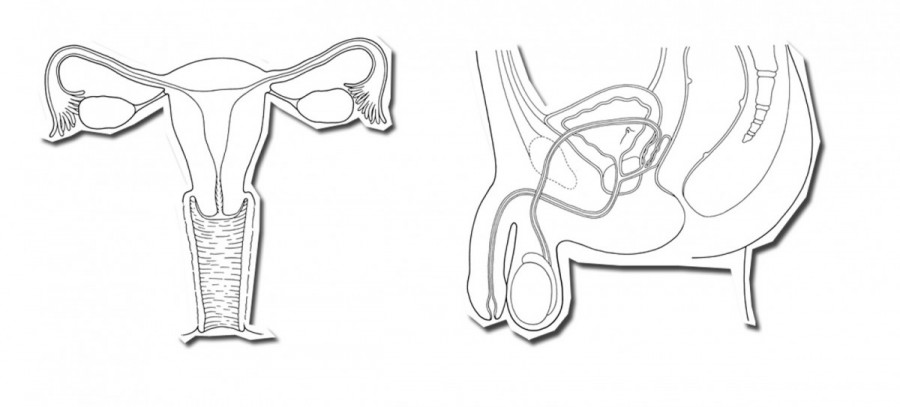Long Division and STIs
A Look at Sex Ed Since Quebec’s Education Reform
Typically, proper condom use isn’t discussed after a history lesson, and—in most high schools—you won’t see teachers following up a math quiz with a brief discussion on sexuality.
This could be an ideal situation—sex being talked about with such ease that it wouldn’t be out of place to discuss pregnancy options after having a lesson with a teacher you’ve known since middle school.
If that was the case, the issue at hand would be much less important. Maybe then, we wouldn’t be reporting statistics like Quebec’s 159 per cent increase in chlamydia cases over the past 13 years.
That’s not what’s happening, however.
Since the 2005 education reform put in place by Jean Charest’s Liberal government, curriculum changes have pushed sexual education from something discussed in health class to something that can easily be eliminated by teachers who don’t include it in their lesson plan—whether that’s because they’re receiving hardly any instruction on how to teach it, because they don’t feel the need to or simply because there isn’t the time.
“The idea is that every teacher from math to science should integrate sex ed into their classes,” said Juniper Belshaw. “What happens is that teachers are often not trained and might not feel comfortable talking about sex.”
Belshaw is the fundraising and development coordinator at Head and Hands, an NDG-based not-for-profit group that aims to promote the physical and mental wellbeing of youth.
Youth Teaching Youth
Head and Hands started their Sense Project in order to prevent sex education from slipping through the cracks of the often-vague high school curriculum since the education reform.
A peer-based sex ed program geared towards informing youth to make empowering decisions about sexual health, they target 14- to 17-year-olds—not only in school, but in group homes and community centres as well.
“I think back to my sex ed growing up in BC, which sort of felt similar to [the current Quebec system], where in biology class our teacher called blowjobs something like, ‘kissy-wissies,’” said Belshaw.
“Some teachers […] feel comfortable talking about it—but the vast majority don’t. So that’s where we get this gap, where students aren’t getting sex ed, or they’re not getting comprehensive sex ed or they aren’t getting sex ed at all.”
It’s that exact variability that makes sex educators, health practitioners and parents nervous.
The reality is that it’s entirely possible youth are receiving proper teaching on things like contraceptives, consent and sexually transmitted infections, but it’s still likely that they aren’t. When considering the states, it’s an all too uncertain of a risk to take.
“It’s a real public health issue,” said Belshaw. “Some youth are growing up thinking that there’s a cure for AIDS and when youth don’t know how to properly use a condom, those are issues. It’s really important to empower youth when they’re young to make informed decisions.”
Whose decision it is to make sure this happens is a sort of grey area, especially through the current system where no regulation exists to say who should teach what, or when.
“We use harm-reduction at Head and Hands, which is the idea that you meet people where they’re at,” said Belshaw, explaining that reducing harmful consequences related with risky behaviour is their priority, rather than trying to stop any and all behaviours that could lead to harm.
“I kind of think about sex ed in Quebec in the same way, I think that it’s better if kids get some education. I think if the teacher’s willing to do that then that’s rad, and if it’s another community organization that does it, that’s also rad,” she said.
“The Liberal government was talking about bringing sex ed back in a more real way and we would love to have a say in that process if the government was to decide to make sex ed a priority again—which we think it should.”
Teachers Teaching Teachers
One of the major difficulties since the reform—other than making sure teachers are, in fact, incorporating sex ed into the curriculum—has been making sure that teachers are qualified and comfortable doing so.
While external organizations, like the Sense Project, can come into schools to teach, it’s easier to reach more classrooms if teachers are following what the reform called for.
Formulating a sex ed curriculum that’s able to be incorporated into every class from biology to religion isn’t simple. The Teachers’ Toolkit, made by AIDS Community Care Montreal, helps teachers to do just that.
By having a database of comprehensive lesson plans, the toolkit offers teachers a way to educate themselves, and in turn become resources in sexual education for their students.
“It was actually quite difficult to picture what sexual health education would look like after the reform since the change really put the onus on teachers,” said Kimberly Wong, HIV educator at ACCM, the organization who started the toolkit after the reform.
“Ideally, sex ed would be taught in the classroom by individuals who specialize in the subject so that students can get accurate and up-to-date information.”
Quebec has one of the highest rates of denominational schools per capita in the country, another factor that comes into play when ensuring each and every student has access to the same comprehensive sexual education, no matter what their school or background.
“It really depends on the staff and administration at each individual school,” said Wong. “There are ways to integrate sex ed in the classroom of these schools and I think the lesson plans in our Ethics and Religious Culture section are great examples of how to do so.”
Those lessons include chapters like first romantic and sexual relationships, myths about sexual violence, and pregnancy options, highlighting things like dispelling common myths associated with sexual practices.
“It’s really difficult to know what direction sex education will take in the future,” she said. “I think what’s most important is providing teachers and schools the tools they need to be able to teach sex ed comfortably in the present.”





_600_375_90_s_c1.jpg)
